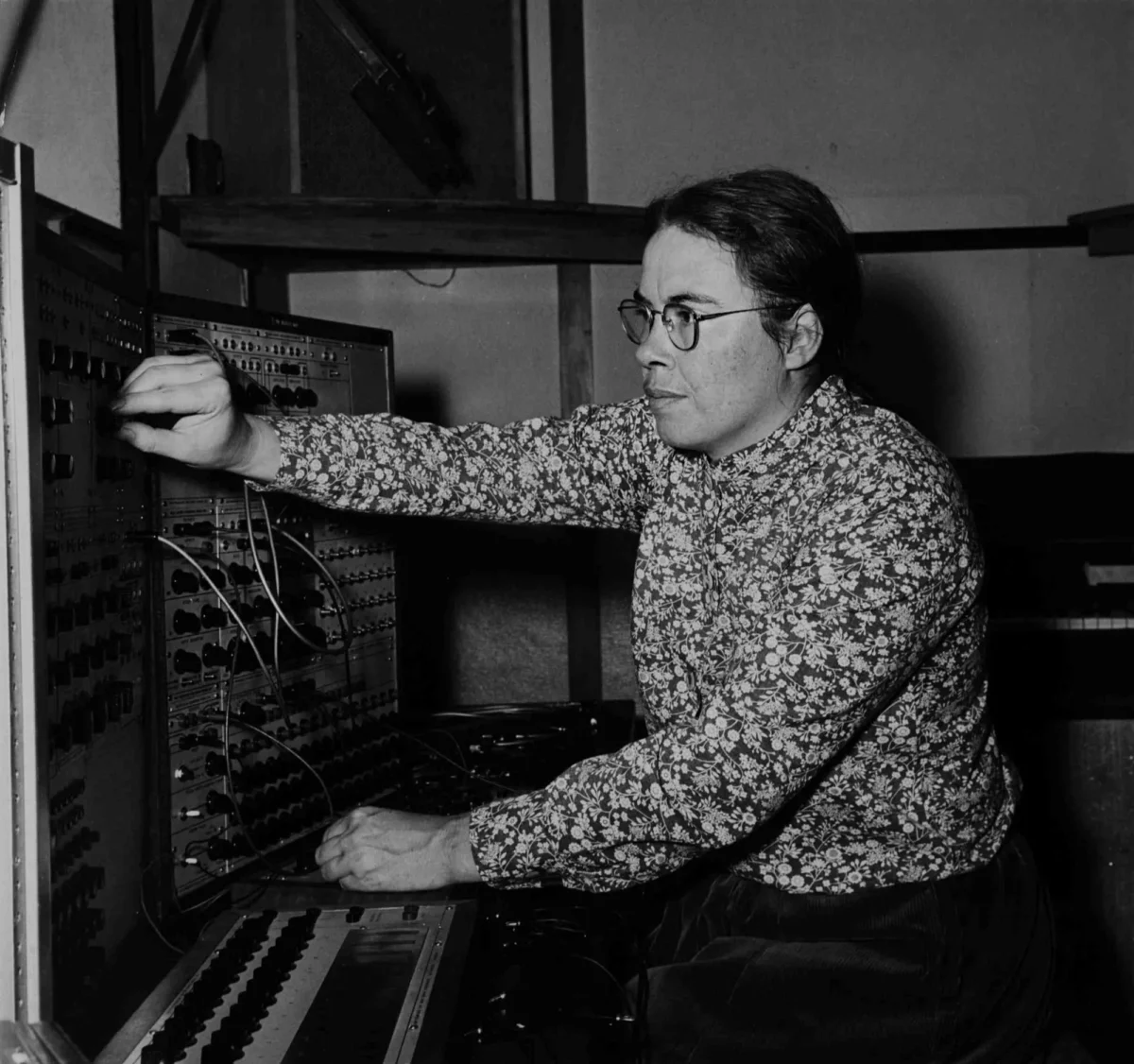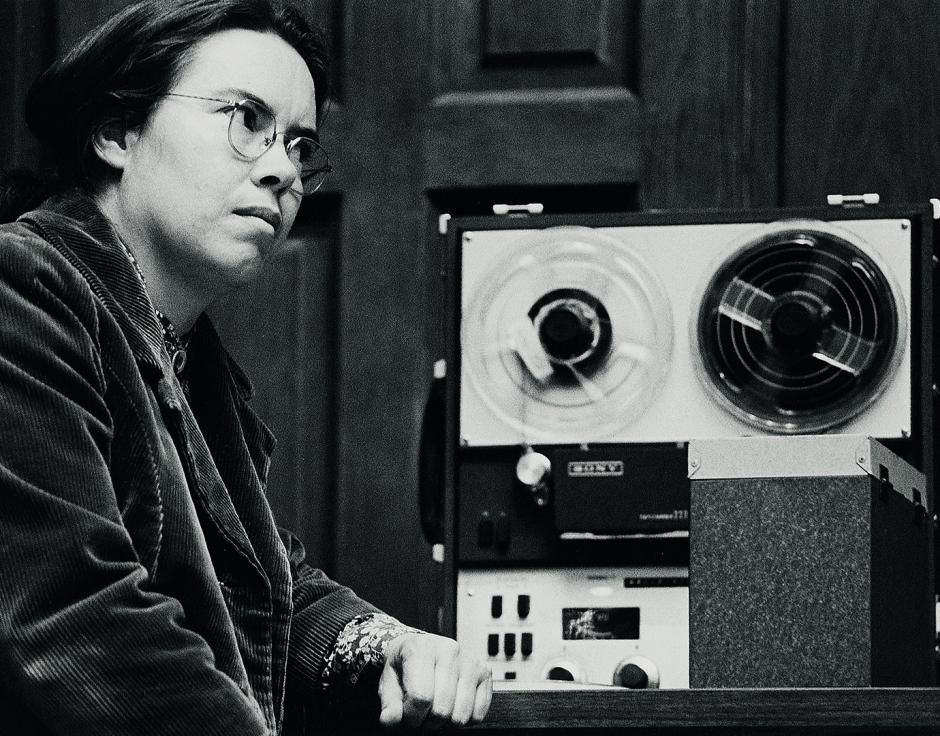-
×
 Kool & The Gang Promo Photo [Booking promo]
1 × $12.00
Kool & The Gang Promo Photo [Booking promo]
1 × $12.00
Subtotal: $12.00

“MY EARS FEEL LIKE CAVES.” “I felt like a witch capturing sounds from a nether realm.” “Everything is watery and the sound of someone’s voice rides into my ears on rivulets.”
It’s a bit daunting to write about Pauline Oliveros, and write about sound, when she was so adept at describing sound herself. Specifically, she was able to illustrate a person experiencing sound so colorfully. I believe she was able to do this because of her practice of deep listening, which she described as “listening in every possible way, to everything it’s possible to hear, no matter what you are doing.” Deep listening gave Oliveros the capability to know the sounds around her intimately.

Pauline Oliveros was a propulsive force in post-war electronic music in the United States, omnipresent and perpetually influential. Self-ascribed in a 1971 issue of the avant-garde magazine, Source, as a “two-legged human being, a female, lesbian, musician, composer, among other things which contribute to her identity,” Oliveros believed in the transformative power of listening, both for the individual and for society at large. Furthermore, the many facets of Oliveros’ identity came to inform her work time and time again. Along with over-viewing the background and compositions of Pauline Oliveros, I practiced one of her improvisatory pieces from Sonic Meditations and I have recorded my thoughts and experience from this piece at the end of this post.
Born in 1932, Oliveros grew up in a musical family, learning to play violin, French horn, piano, and most notably accordion. Her interest in sound shared an equal presence with her formal musical training throughout her childhood. Oliveros paid attention to the “in-between sounds of the [radio] station,” the ways a car motor would shift how her parents’ sounded while talking in the car, the natural sounds of Houston.
Her musical studies brought her to the University of Houston, San Francisco State College, and eventually the San Francisco Conservatory of Music from the mid-1950s to the mid-1960s. It was during this period that Oliveros dove into free improvisation and electroacoustic music, working with figures like Terry Riley, Loren Rush, Ramon Sender, and Morton Subotnick. One of her early works, Time Perspectives (1960), came out of this time in San Francisco. Written and recorded in her apartment, Time Perspectives is a freeform experiment in sound that also reflected what scholar Martha Mockus refers to as “lesbian domestic space,” evoked through samples of Oliveros’ laughter with her partner, Laurel Johnson.
Oliveros’ electronic work became further solidified when she co-founded the San Francisco Tape Music Center in 1962 with Ramon Sender and Morton Subotnick. It would eventually move and morph into the Mills Tape Music Center, and then the Center for Contemporary Music. Oliveros was the first director of the Center for Contemporary Music, and her own electronic works during this period were flourishing.
I of IV is one of the most well-known from this time, composed in 1966 with twelve sine-wave generators, a keyboard (operating as a switch control), and a spring reverb. The result is a haunting, eerie atmosphere. The piece was included on Columbia Odyssey’s New Sounds in Electronic Music in 1967, alongside Steve Reich’s “Come Out” and Richard Maxfield’s “Night Music.” The record was one of the biggest moves by a major label to market avant-garde electronics to the public. Unlike Reich’s and Maxfield’s works, I of IV was an early example of “live electronic music,” which is electronic music without any edits of the tape.
In the early 1970s, Oliveros would take improvisation to another level with her collection, Sonic Meditations. Deeply affected by the Vietnam War protests occurring on University of California San Diego’s campus, where she recently took up a faculty position, Oliveros “began to turn inward.” One way she accomplished this was by playing a single drone on her accordion, focusing specifically on the note A for a whole year. Oliveros’ meditations with her accordion also manifested in her solo record, Accordion & Voice, released in 1982. The record captures her on the A-side gradually working with a drone on “Horse Sings from Cloud,” and is perhaps one of the best examples of what her own musical meditations sounded like.
Her private music-making during the early 1970s would eventually culminate into Sonic Meditations, originally published in Source in 1971. Sonic Meditations was a series of text instructions for improvisatory sonic experiments. Some of these were designed for groups, and they found their way into Oliveros’ group, the ♀︎ Ensemble. Coming out of the second-wave feminist movement, the ♀︎ Ensemble met weekly for discussion, journaling, practicing improvisatory text scores, and performing Kinetic Awareness.
The work Oliveros did with the ♀︎ Ensemble further solidified the deep listening concept, which developed into the Deep Listening Band in the late 1980s. The band included Stuart Dempster, David Gamper, Panaiotis, amongst others, who played in incredibly resonant spaces such as cathedrals, caverns, and cisterns. The ensemble included vocals, electronics, keyboards, accordion, trombone, and didgeridoo, and the spaces they performed in opened up their recordings to be experiments in reverberation, delay, and other acoustic properties. By 1990, Oliveros also developed the project into a publishing company, the Deep Listening Catalog.
Throughout Oliveros’ career in composition, performing, and teaching, she also produced multiple written works musing on various topics in sound and composition. My personal favorite, her collection Software for People from 1984, includes “Some Sound Observations,” a compilation of thoughts related to her sonic surroundings, the listening exercise, “The Poetics of Environmental Sound,” and her 1970 New York Times article, “And Don’t Call Them ‘Lady’ Composers,” which voices the marginalization of women in composition that still continues to this day.
Up until her death in 2016, Pauline Oliveros established throughout her life that the body, sound, and music are inextricably linked, and that an individual has incredible awareness when they ground their musical practice in their body and sense of self.

What follows are the results of my own experiment with Oliveros’ Sonic Meditations. I have linked to a few of Oliveros’ writings below, including Sonic Meditations, and encourage anyone wishing to attune to the sounds around them to give one a try.

I come home to a seemingly quiet apartment. As I lay back on the couch, my ears fight for something to hear, a sound to focus on. My hearing stretches and I can faintly hear a neighbor’s air conditioner whirring next door, a low consistent hum. As I start to train my focus on this sound, my right ear notices an insistent bird, chirping at two-note intervals, vying for my attention. The front gate to my building slams, an upstairs neighbor rustles, a couple branches rub against my window, causing my eyes to fly open and I startle, worried it’s a bug trapped inside my home. I settle and bring my attention back to the air conditioner, still barely audible across the way. It sound less like an air conditioner now, more like an oceanic white noise, but it is still distinguishable from the natural sounds around me. The wind sweeps the trees outside my window as an impending rainstorm brews, and the sound is so velvet and soft that a calm spreads within me. As I start to lose sense of the air conditioner, the refrigerator in my apartment snaps into a hum, the clouds outside burst into a storm, and my grasp on the air conditioner is obliterated. I ultimately didn’t lose recognition of its sound, instead my environment overpowered its existence. There is no such thing as silence in this world.
In the June 2022 issue of The Wire, linked below, there is a fantastic Primer on Pauline Oliveros’ work that I highly recommend.
Tollem McDonas / Pauline Oliveros / Nels Cline – Molecular Affinity – $20
Pauline Oliveros – Accordion & Voice – $28
Pauline Oliveros – Crone Music – $13
Pauline Oliveros – Electronic Works 1965-1966 – $16
Pauline Oliveros – Tara’s Room – $12
Pauline Oliveros – The Wanderer – $28
Pauline Oliveros & Guy Klucevsek – Sounding Way – $12
Deux Soeurs – $20
Alvin Lucier – Music 109: Notes on Experimental Music – $21
The Wire – #460 June 2022 – $10
Pauline Oliveros official website
Louise Gray, “The Primer: Pauline Oliveros,” The Wire (2022)
Ted Gordon, “‘New Sounds in Electronic Music’–Steve Reich,
Richard Maxfield, Pauline Oliveros (1967),” Library of Congress (2017)
Martha Mockus, Sounding Out: Pauline Oliveros and Lesbian Musicality (2008)
Frances Morgan, “Diffuse, Open and Non-Judgmental: Frances Morgan on Pauline Oliveros’s Early Electronic Music,” The Wire (2016)
Kerry O’Brien, “Listening As Activism: The ‘Sonic Meditations’ of Pauline Oliveros,” The New Yorker (2016)
Pauline Oliveros, Deep Listening: A Composer’s Sound Practice (2005), print
Pauline Oliveros, Software For People: Collected Writings 1963-80 (1984), print
Pauline Oliveros, Sonic Meditations (1971)
Pauline Oliveros, Sounding the Margins: Collected Writings 1992-2009 (2010)
Hannah Pezzack, “For Aural Use Only: Pauline Oliveros’ Quantum Listening,” The Quietus (2022)
Sunny Sone, “Pauline Oliveros Emerges From The Underground,” Texas Observer (2021)
Heidi Von Gunden, The Music of Pauline Oliveros (1983)
– Hannah Blanchette
August 7, 2022 | Blog